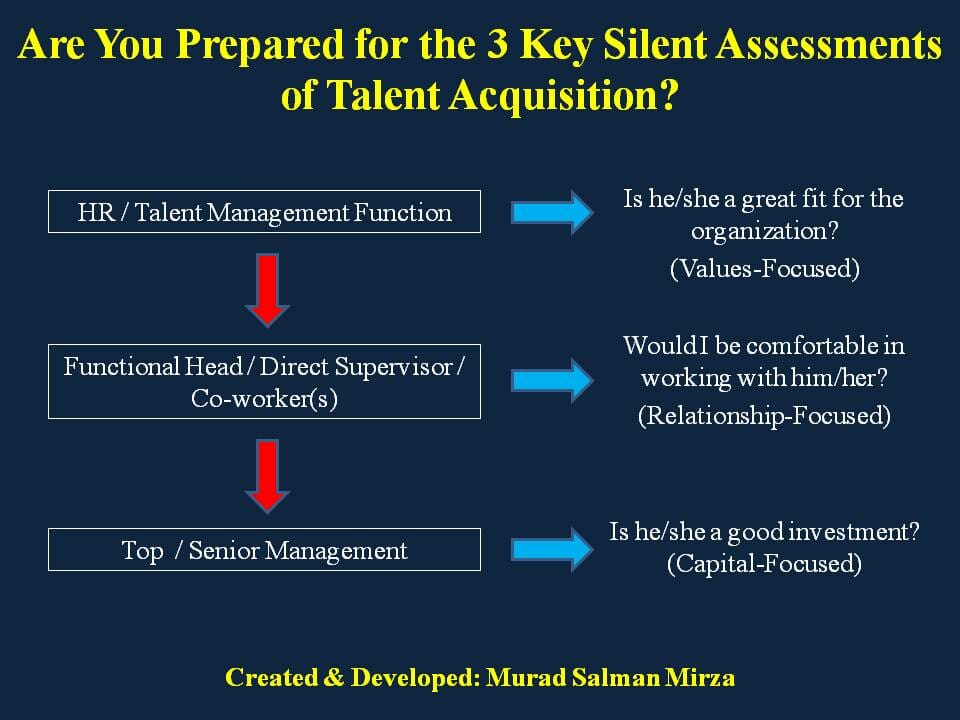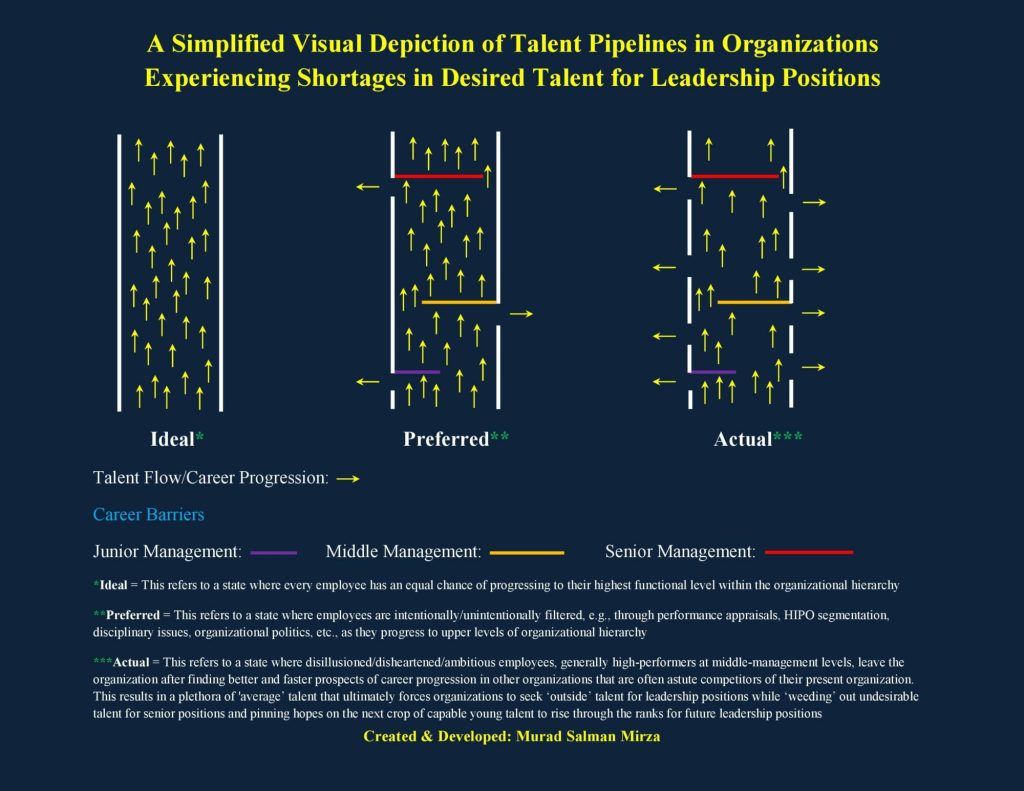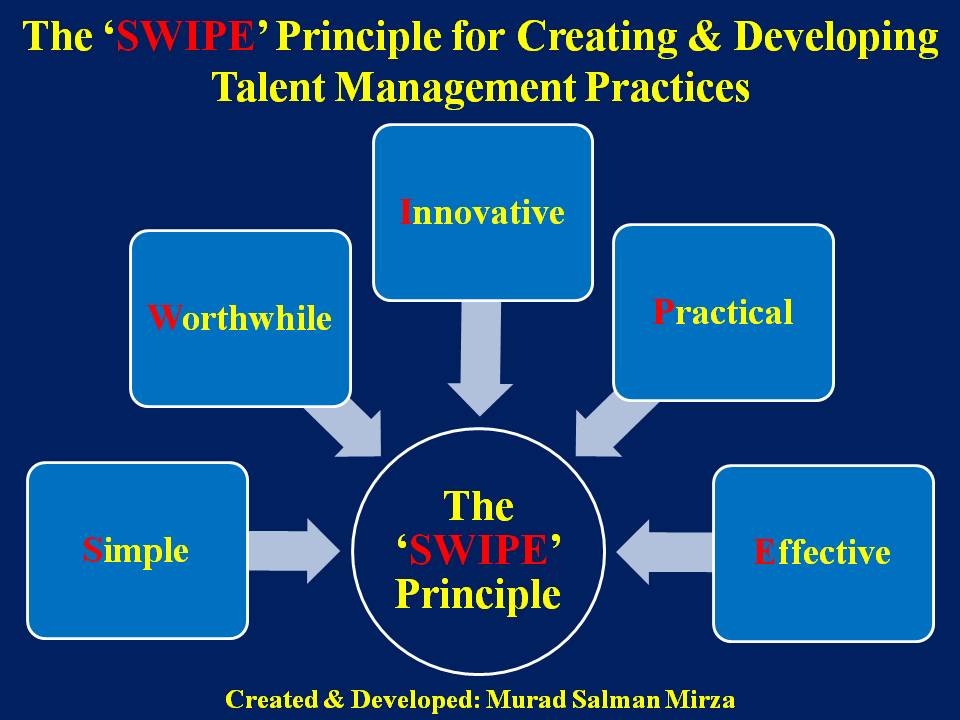There is no greater debt on an organization’s conscience than underutilized talent; therefore, the best way for ensuring success in the “war for talent” is by taking efficient and effective measures during the “peace in talent.” However, maintaining a capable and motivated multi-generational workforce whose priorities are aligned with the corporate imperatives is becoming increasingly harder each day as AI-enabled entities make significant inroads in the workplace.
The redundancy apprehension clouding the minds of professionals is impacting their health and wellbeing at an alarming rate. Very few organizations display the boldness to take effective measures to manage such issues while embarking upon employer branding initiatives. The conventional wisdom throughout the corporate landscape is to use technology as a relationship buffer between senior management and the workforce to avoid searching for effective solutions to uncomfortable questions about managing the workforce.
The application of metrics-driven KRAs/KPIs in conjunction with an elaborate system of associated rewards and recognition programs to mask the simmering discontent at the manager-employee level due to a stifling work environment. Such measures are often the result in the career progression of promising talent being held hostage by a supervisor’s assessment of their performance to complement another metric on the HR dashboard to inform senior management on how well things are working.
Furthermore, more of the physically demanding jobs are being relegated to smart machines. At the same time, cerebral skills steadily gain elevation as the last bastion of human relevance in the workplace of the digital age. Consequently, the following assessments are getting more complex in their determination to hit the mark in terms of getting the right talent and technology and is being leveraged in the respective context:

The sobering reality of shrinking positions is also forcing the working professionals to confront the very essence of work as they wrestle to stay relevant in a ubiquitous, AI-driven world. Moreover, the rush to implement engagement initiatives is often at a faster pace than the time required for effectively resolving more pressing issues. A significant number of such programs lack the meaningfulness to survive passive resistance by experienced employees weary of trendy leadership initiatives.
Additionally, organizations are experiencing frequent blockages in the talent pipelines as the uncertainties of gainful employment in ‘conventional’ professions coupled with the apprehensions of ‘life without work’ is driving the need for ‘postponing’ career moves or ‘delaying’ retirements. This is being exacerbated by real wages spiraling down in relation to inflationary pressures, the extension of employment due to longer life spans, regulatory relaxation of the pension age, and the desire to maintain corporate health and wellbeing benefits. Consequently, near-retirement professionals are caught in the struggle to maintain their relevancy to prolong their careers and try to build enough savings for retirement. Therefore, it becomes imperative for organizations to gauge the effectiveness of their talent management practices and the resulting risks to the employer brand, especially by elevating the significance of handling employee departures.
Gone are the days when professionals depended solely on their employers to provide them with a viable career path. The employee of today is more informed, incisively skilled, and comes with a range of knowledge that lets them achieve maximum gains. Consequently, organizations are being pushed to increase the quality of employee experience in addition to improving compensation and benefits to attract and retain the desired talent. The era of employee loyalty has been over for quite a while now, and now the concept of employee partnership that was built on the ashes of loyalty is also under threat. A new arrangement of employee gratification, where attractive total rewards packages are customized to serve as golden handcuffs on top talent, is now the norm.
Astute employees refrain from confusing conformance with performance and seek ways of increasing their “indispensability quotient” by applying their skills and ensuring sustained career development and progression. They do this by having a keen eye on the changing professional landscape due to the evolving ecosystem of their industry and adapting to stay relevant.
One of the major short-sighted mistakes that organizations make is implementing talent management practices that are designed for risk accommodation against talent flight instead of risk mitigation that caters to talent engagement. This leads to the inability of senior management to provide a robust bridge for aligning personal goals with organizational imperatives with employees unable to see their own benefit. Consequently, apathy prevails at the cost of organizational harmony. This leads to the following phenomenon:

The variety of talent management practices used across the corporate world to overcome workforce challenges falls within the following two main strategies:
Approach A (Indoctrinate, Assimilate & Obligate)
- Focused on creating and grooming loyal disciples based upon the desired corporate norms
- Instills shared values as a robust and binding foundation for a cohesive corporate culture that borders on fanaticism
- Encourages adherence to well-established and standardized work practices designed around functional optimization and harmonization
- Prefers corporate hierarchy for incentivizing improvement initiatives
- Designs compensation packages as golden handcuffs for maximizing talent retention, especially, those who are considered flight risks due to their particular skill sets and perceived lack of capable replacements
- Talent treated as an asset prone to depreciation
- Training, learning, and development is discretionary and generally based upon supervisory assessment/prerogative in accordance with the functional requirements
Approach B (Accommodate, Motivate & Facilitate)
- Geared towards creating an empowering work environment that uses both apparent and hidden talents of employees
- Uses shared values as guiding principles for self-discovery of work excellence and strengthening of organizational integration
- Encourages progressive experiments and timely improves work practices for enhancing wellbeing, mindfulness, and productivity of a multi-generational workforce
- Prefers thought hierarchy for incentivizing innovation initiatives
- Designs compensation packages to enhance the employee experience during employment association for creating alumni ambassadors as an astute employer branding measure to attract future talent
- Talent treated as an investment prone to rich dividends
- Training, learning, and development is mandatory to ensure congruence between individual ambitions and corporate imperatives
An astute talent management professional can customize the most appropriate approach by adhering to the following principle with consideration of the unique dynamics of an organization.

This is a strategic undertaking of prime importance since the very future of the corporate entity is at stake in the unforgiving, uncompromising, and unrelenting nature of the Digital Age. Consequently, the following tool can be used to make insightful and sound decisions:

The path to sustainable success, competitiveness, and relevance in a rapidly evolving digital world is paved by productive rebels rather than insular conformists. Organizations have to ensure that their talent management practices have the space for change, to approach these challenges in unconventional ways that boost innovation. Organizations that have the ability to learn from their missteps are the ones with the vision for maximizing the probability of success. Will you commit?
